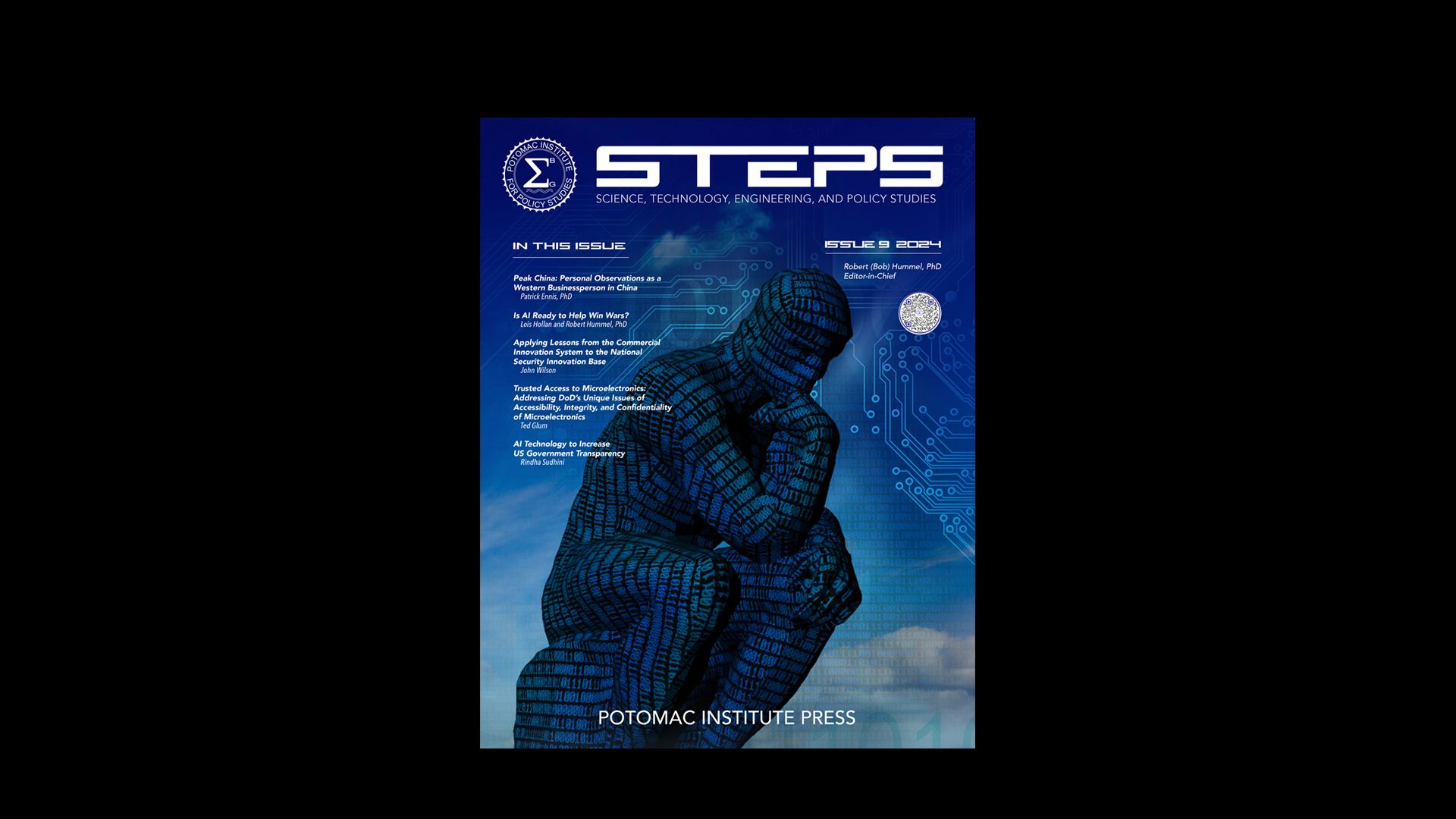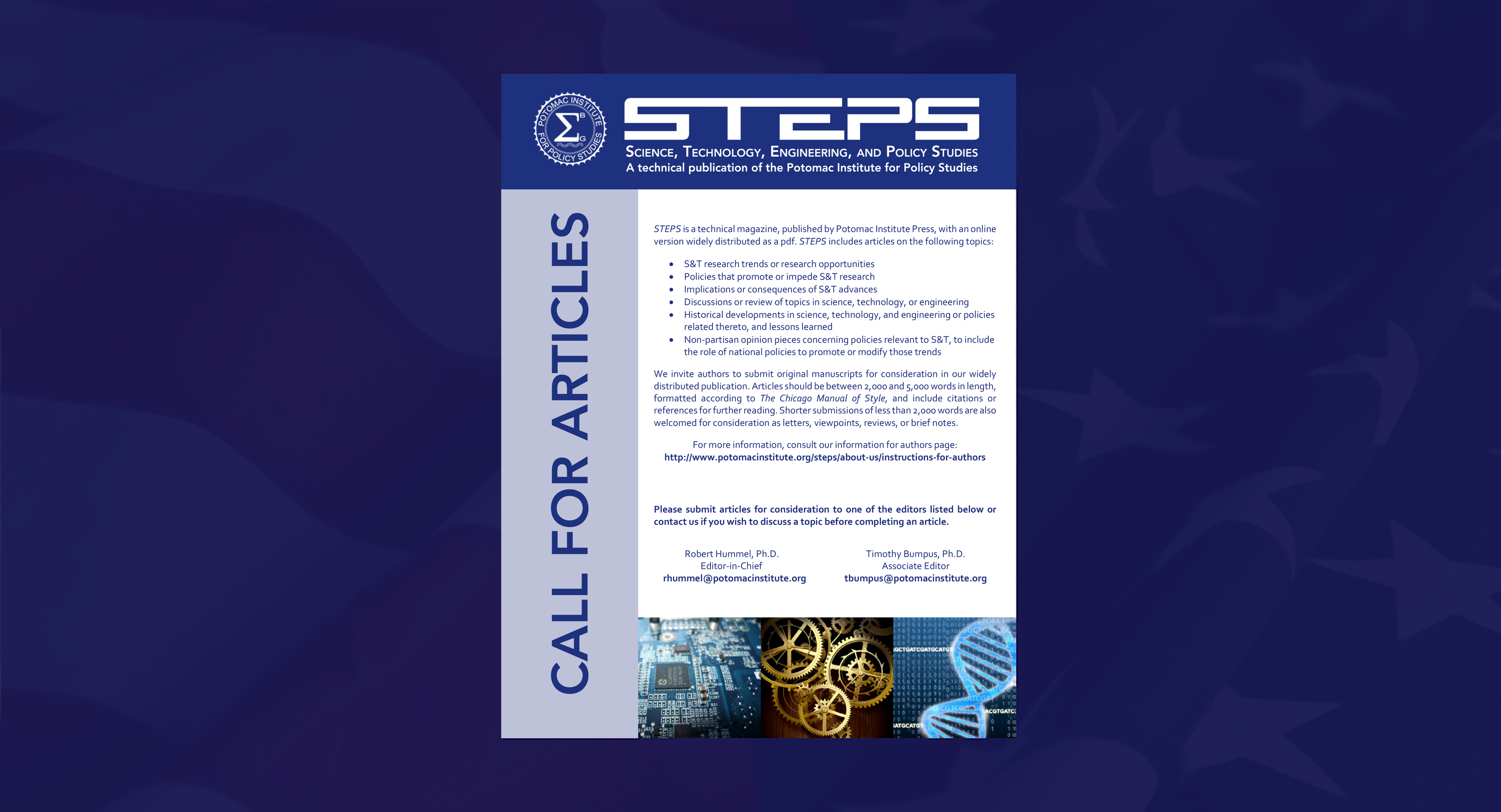The Potomac Institute for Policy Studies is pleased to announce the February 2016 Issue 3 of STEPS: Science, Technology, and Engineering Policy Studies. Please enjoy this featured views in brief:
Global Extinction or a Space-Industrial Complex
During the the peak of the Apollo program, the United States government funded NASA at over 4% of the federal budget as compared to the less than 0.5% of federal funding NASA receives today. The allocation of resources was possible as our country perceived a real threat from the Soviet Union and their launch of Sputnik. Not only did we mobilize our military and technological assets to protect our way of life, but President Kennedy energized the nation in a time of global crisis while the Cold War was threatening the world with nuclear annihilation.
...this nation should commit itself to achieving the goal, before the decade is out, of landing a man on the moon and returning him safely to the earth.
These words still elicit powerful emotions both from those who experienced them at the time and those born well after Neil Armstrong, Buzz Aldrin, and Michael Collins returned to Earth. Clearly, this rich history in space exploration and fierce protection of our culture was founded on the existential threat of a Soviet Union that would dominate space and command intercontinental missiles with nuclear weapons. Regardless of whether the threat was real or perceived, the vision along with presidential leadership mobilized a nation to accomplish tasks that benefitted the US in innumerable ways.
Find the full article here.

















